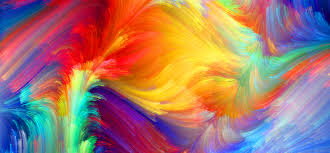The human brain processes color in a unique way. The perception of color can send a surge of emotions to the human brain, which is why it becomes very important for website owners to implement the right colors on the pages. In general, color psychology deals with how colors affects human behavior. Studies have shown that people react differently to different colors – some colors induce positive behavior while others induce negative behavior. Whatsoever designers should pay a lot of attention to different aspects of the website to ensure the visitors are not repelled by the color palette implemented in the website. The concept of color psychology in website design can have a major impact on the digital marketing strategy of a company.
Don’t Turn Your Website Design into a Rainbow:
Use of color should be done in a controlled and meticulous way. Your visitors do not want to see the entire spectrum of color on the website; overuse of colors can drive away visitors and hence reduce conversion rates. A lot of color play can produce a clumsy, confusing and chaotic effect on visitors.
Analyze the Nature of Your Business First:
The color scheme you implement into your design should be synonymous with the business. If your business deals in children’s toys, for example, you should not use colors like black or purple; the website should instead be cheerful and vibrant, with tones like sky blue, green, etc. On the other hand, a posh women’s apparel store cannot sport colors such as yellow or grey.
Choose Colors Depending on the Nature of Business:
One of the most significant choices of color is blue as it is known to gather the trust of users. For businesses where retaining the customers’ trust is necessary (like banks, or consultation, or social media), blue is widely used throughout. On the other hand, businesses dealing in organic products (like natural lifestyle and herbal products, or anything related to nature or earth) should use green and other earthy tones to make it relevant. Green is also used to create an isolated highlighting effect in a website.
Certain Colors Are Best to Avoid:
Yellow is a color which when used can cause eye strain and drive people away. A lot of vibrant colors might look attractive, but people are not likely to stay for long on the website. The whole purpose of digital marketing is to attract more people to the website and keep them longer, so that they can drive conversions.
Focus on the Gender You Are Targeting:
It can be wise to choose the color palette based on the gender of your business is trying to target. A men’s wear website should sport a different color scheme than a website which deals in women’s products. Colors like brown, orange and grey are disliked by women in general while purple is not the best color for men. Men prefer bolder and darker tones while women like lighter ones.
Use Brighter Colors for CTA Buttons:
A call-to-action button is an essential part of a website as it can simplify the browsing process for customers. With the right design, text and implementation, CTA buttons can easily increase the conversion rates for a website. Speaking of design, bold colors can be a good choice for call-to-action buttons. Surveys have reported that darker CTA buttons drive lesser conversions than ones with brighter colors. The use of color also determines the visibility of the button, which is why the wrong color choice can negatively impact the conversion rate.
Never Undermine the Power of White:
It is the most widely accepted color which you can never go wrong with. White backgrounds with black text can be the best and the most undeniable combination for any website. Hint of other tones might not affect the conversion rate, but a predominance of white in the website provides a sense of cleanliness, which most visitors tend to enjoy when they visit a website.
Although the impact of colors used in a website differs from one person to another, it can be a matter of personal preference. Researchers have found that about 90% of the people make decisions about purchases based on the color itself, although the kind of product matters in that case.
My name is Minakshi having 7 years+ experience in Digital Marketing.My experience spans marketing project management, social media/digital marketing, branding, SEO/SEM, web optimization, and analytics.
